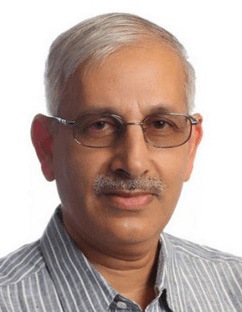By Atul Aneja
The possibility of 2025 transitional elections promises to turn Myanmar into a stable and prosperous democracy.
CONFRONTED by a rash of insurgencies across the country, Myanmar’s government has devised a plan for an amicable political transition. It has decided in principle to hold national elections next year, paving the way for democratic civilian rule.
Chairman of the State Administration Council (SAC) Senior General Min Aung Hlaing has reportedly told representatives of the 10-nation Association of the South East Asian Nations (ASEAN) as well as authorities in China that his government intends to hold free and fair polls next year in Myanmar under national and international scrutiny.
There are three compelling reasons why the rest of the world must welcome the senior general’s move.
First, elections based on the popular vote promise to restore stability in Myanmar. In turn, a peaceful Myanmar riding on fresh political legitimacy can become the engine of rapid growth. Nay Pyi Taw can become the next Asian tiger as it has all the attributes to steer a game-changing economic transition.
For starters, the country is endowed with abundant natural resources, which, if leveraged efficiently, can trigger a rapid economic surge.
Myanmar’s northern Shan Plateau, which borders China, Laos and Thailand contain rich deposits of silver, lead, zinc, and gold, along with rubies and sapphires. These precious stones are also mined in bulk in Mogok in the famed Mandalay region.
Tin and tungsten deposits can be found in the Taninthayi region – a mountainous zone that also shares a border with Thailand.
Since the 1980s copper mining has expanded in Monywa – the largest city in Sagaing Region that lies 136 kilometres north-west of Mandalay on the eastern bank of the River Chindwin. Besides, Myanmar’s restive Kachin state has made its mark on the world’s map, on account of copious reserves of jade.
Myanmar is also Asia’s energy powerhouse, with oil reserves standing at 3.2 billion barrels, which is coupled with a hefty 18 trillion cubic feet of deposits of natural gas. Most of the energy sites can be found offshore, but Myanmar’s Magway Region also produces some oil onshore. Of its total revenues, oil and gas contribute a sizeable 15-20 per cent.
As the seventh largest producer of rice in the world, Myanmar is also a major player in Asia contributing to regional food security.
Second, successful transitional elections can generate regional prosperity across Asia. This is mainly because of Myanmar’s unique geo-economic location apart from its rich natural resources and relatively young population. For instance, sharing common borders with two Asian giants, Myanmar can be a bridge between India and China. Myanmar’s ties with China are on the upswing in the north, but the government in Nay Pyi Taw is also determined to build an exceptionally solid relationship with India in the South. With ties between India and China gradually improving after Prime Minister Narendra Modi and China’s President Xi Jinping met in Kazan on the sidelines of the BRICS summit on 23 October, a new opening may emerge to co-link China, Myanmar, and India in a mutually advantageous partnership in the future.
In case a trilateral arrangement takes root, it would not be the first time that India, Myanmar, and China would be working together in the economic sphere. In fact, the trio collaborates in Myanmar’s off-shore Shwe gas field. Ahead of China’s Belt and Road Initiative (BRI), the development of the Bangladesh-China-India-Myanmar (BCIM) was also on the drawing board. This corridor would have essentially linked Kunming in China with Kolkata in India. But with China proposing the China-Pakistan Economic Corridor (CPEC) that passes through undivided Kashmir that had acceded to India at the time of Indian independence, as part of the BRI, India lost interest in the BCIM economic corridor.
Instead, the Chinese went ahead with the China-Myanmar Economic Corridor (CMEC), which is currently being threatened by the raging insurgency in Myanmar. But, in the future, and case relations between India and China continue to warm up, it would be natural to consider the expansion of the CMEC to India. Such an undertaking could naturally drive prosperity in a vast area by hosting Special Economic Zones, tourism pivots, fostering a new wave of urbanization, and much more.
Myanmar, the gateway to Southeast Asia is also at the heart of the Asian highway project — a giant corridor that can link South Asia with the ASEAN. If developed imaginatively, it can link Himalayan Bhutan with Danang, Vietnam’s coastal hub. Once completed, it will add another engine to drive regional growth.
Third, following the political transition brought about by elections, Myanmar can play a major role in consolidating the multipolar global order, which is experiencing a steady evolution. Insulated from the threat of regime change following elections, Myanmar can simultaneously bond with major poles of the multipolar world — India, China, Russia, ASEAN, and the United States. Myanmar has already demonstrated interest in joining the BRICS-plus grouping — a sentiment it shares with many countries of the Global South that are looking for alternatives beyond the west-dominated global system.
With a deep and vibrant cultural history, Myanmar will extend the ambit of civilizational states such as India, China, and Russia, which anchor the rise of a multipolar world.
(Atul Aneja is a strategic analyst based in New Delhi, India.)


